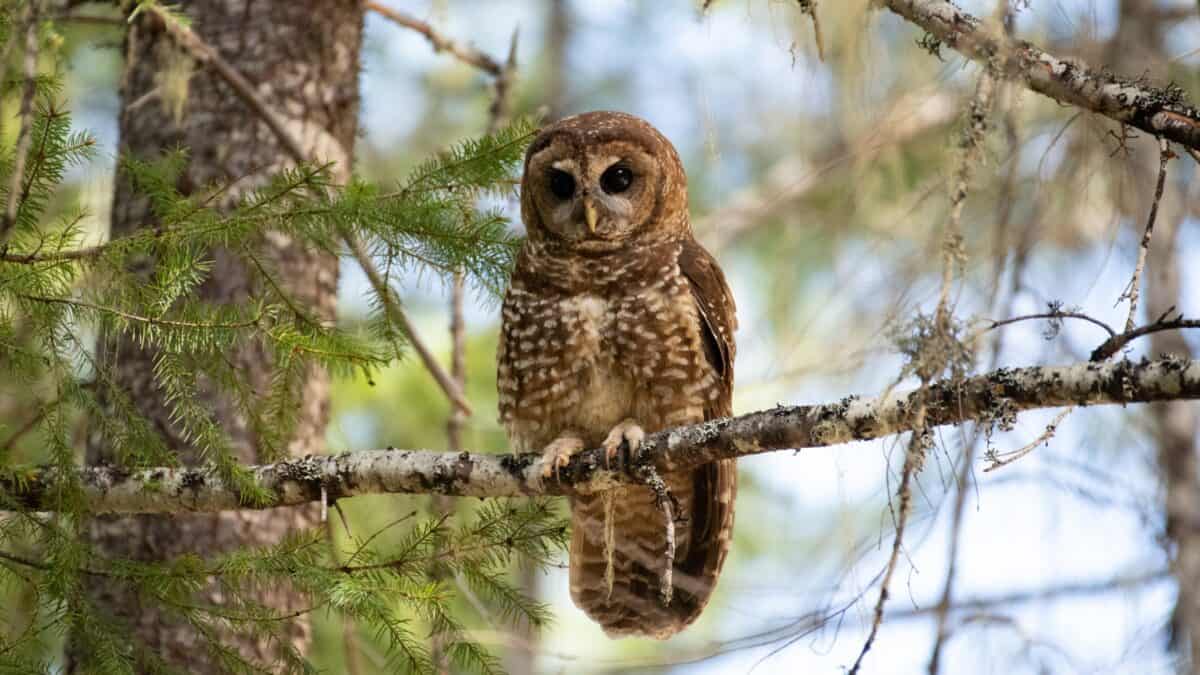Owls have captivated human imagination for millennia, appearing in our myths, stories, and cultural symbols across civilizations. These mysterious nocturnal birds seem almost supernatural with their silent flight, rotating heads, and piercing gaze. While popular culture has taught us some basics about these fascinating creatures, the true biology and capabilities of owls are even more extraordinary than fiction. The following collection of 15 incredible facts about owls might seem like fantasy, but each is firmly grounded in scientific research. From their asymmetrical ears to their specialized feathers, prepare to be amazed by these remarkable adaptations that make owls among the most successful hunters in the avian world.
15. Owls Can Rotate Their Heads Almost 360 Degrees
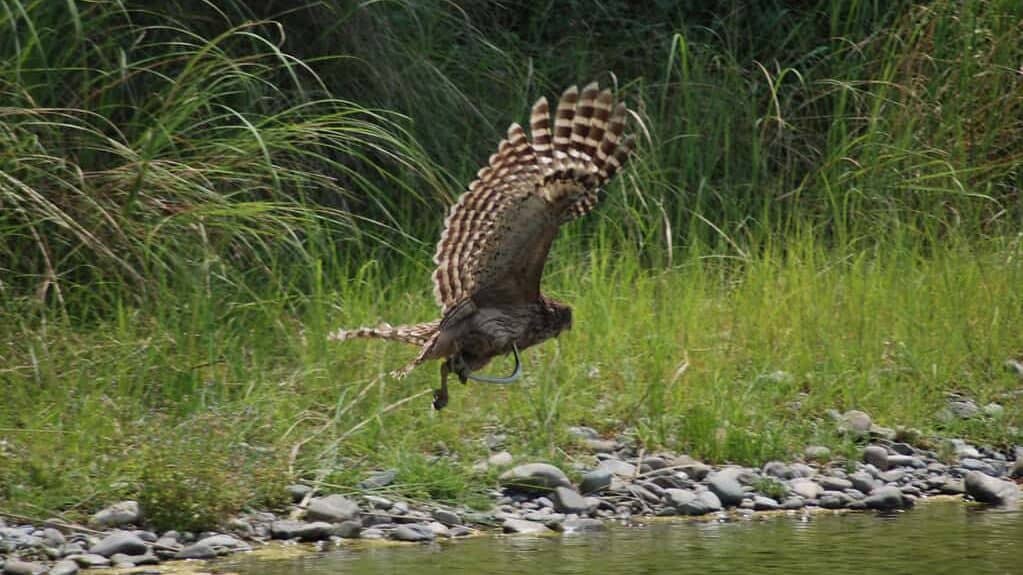
While it’s often exaggerated that owls can turn their heads a full 360 degrees, the truth isn’t far off. Owls can rotate their heads up to 270 degrees in either direction, giving them an incredible field of vision without moving their bodies. This extraordinary ability comes from adaptations in their neck anatomy that humans simply don’t possess.
Owls have 14 neck vertebrae (compared to our 7), which allows for this extreme flexibility. Additionally, their blood vessels have special adaptations that prevent blood flow disruption during these dramatic head turns. The vertebral arteries in owls enter the neck at a much higher point than in humans and have expanded reservoirs of blood, ensuring their brains receive oxygen even during extreme rotation. This adaptation is crucial for hunting since owls cannot move their eyes within their sockets like humans can.
14. Owls Have Asymmetrical Ears

Unlike most animals, many owl species have asymmetrically positioned ears – one ear is higher on the head than the other. This unusual adaptation creates a slight time difference in when sounds reach each ear, allowing owls to pinpoint the exact location of prey with astonishing accuracy, even in complete darkness or when the prey is hidden under snow or vegetation.
This remarkable hearing ability means that some owl species, like the Great Grey Owl, can detect and capture prey moving beneath 18 inches of snow based solely on sound. Their facial discs, those distinctive heart-shaped feather formations, actually function as satellite dishes, collecting and directing sound waves toward their ear openings. The asymmetry effectively creates a three-dimensional sound map that allows owls to hunt successfully when visual cues are limited or nonexistent.
13. Owls Swallow Prey Whole and Regurgitate Pellets

Owls have a rather unusual digestive process that seems straight out of science fiction. Rather than breaking down their food like most birds, owls often swallow small prey items—like mice, voles, and small birds—whole. Their digestive system then performs a remarkable sorting operation, separating the digestible portions (meat) from the indigestible parts (bones, fur, teeth, and feathers).
The indigestible materials are compacted into a tight pellet in a special part of the owl’s stomach called the gizzard. Approximately 6-10 hours after feeding, the owl will regurgitate this pellet. Scientists and naturalists can dissect these pellets to determine exactly what the owl has been eating, making them valuable tools for ecological research. A single Barn Owl can produce more than 1,000 pellets in a year, creating a detailed record of its dietary habits and local small mammal populations.
12. Some Owls Have Different Colored Eyes

One of the strangest and rarest owl traits can be found in the Eurasian Scops Owl, which sometimes exhibits heterochromia—having differently colored eyes. This condition, where one eye might be yellow and the other brown or blue, occurs in less than 1% of the population. While heterochromia is found in other animals (including humans), it’s particularly striking in owls with their already intense, forward-facing gaze.
Eye color in owls generally corresponds to their hunting habits. Species that hunt during twilight hours typically have orange or yellow eyes, while nocturnal species often have dark brown or black eyes. The bright yellow eyes of diurnal (day-hunting) owls contain special oil droplets that improve visual acuity and reduce glare, similar to built-in sunglasses. These adaptations help explain why owls have some of the most effective vision in the animal kingdom, with some species able to spot a mouse moving over 150 feet away in near-complete darkness.
11. Owls Have Specialized Silent Flight Feathers

The silent flight of an owl is perhaps its most remarkable adaptation. Unlike other birds whose wingbeats create a whooshing sound as air passes over their feathers, owls glide through the night virtually soundless. This stealth is due to several specialized feather adaptations that no other birds possess. The leading edges of an owl’s primary flight feathers have a comb-like fringe that breaks down the turbulence that normally creates sound when air flows over the wing.
Additionally, the surface of owl feathers has a velvety texture created by microscopic barbs and a downy fringe on the trailing edge that further dampens sound. Finally, their broad wings allow them to fly slower than other birds of prey without stalling, reducing the sound of rushing air. Laboratory tests have shown that owl flight registers below the threshold of human hearing and below the hearing capability of most of their prey. This silent approach gives them a critical advantage when hunting in the dark.
10. Baby Owls Sleep Face Down

Young owls, or owlets, have a peculiar sleeping habit that appears almost comical to human observers—they sleep face-down. Due to their disproportionately large and heavy heads compared to their undeveloped bodies, owlets often find themselves unable to maintain an upright position while sleeping. As a result, they frequently lie face-down with their heads turned to the side, looking rather like they’ve simply collapsed from exhaustion.
This unusual sleeping position is completely normal and doesn’t indicate any health problems. As the owlets grow and develop stronger neck and body muscles, they gradually transition to the more typical upright sleeping posture of adult owls. Wildlife rehabilitation centers often receive concerned calls about “injured” baby owls that are simply exhibiting this normal behavior. Photos of face-planted sleeping owlets have become popular on social media, leading to greater awareness of this endearing but perfectly natural phenomenon.
9. Owls Are Found On Every Continent Except Antarctica

Owls have achieved an almost global distribution, having adapted to nearly every terrestrial habitat on Earth except Antarctica. From the Arctic tundra (inhabited by the Snowy Owl) to tropical rainforests (home to numerous species including the Spectacled Owl), from deserts (Burrowing Owl) to urban environments (Barn Owl), these adaptable birds have established themselves in remarkably diverse ecosystems across more than 200 species worldwide.
This widespread distribution is a testament to their incredible adaptability and specialized hunting techniques. The largest owl species, the Blakiston’s Fish Owl of Russia and Japan, can weigh up to 10 pounds with a wingspan exceeding 6 feet, while the smallest, the Elf Owl of the southwestern United States and Mexico, weighs less than 1.5 ounces and could fit comfortably in a human palm. This diversity in size and adaptation has allowed owls to fill ecological niches across the globe, making them one of the most successful bird families in terms of geographic range.
8. Some Owl Species Live Underground

The Burrowing Owl defies our typical image of tree-dwelling owls by making its home primarily underground. These small, long-legged owls live in burrows they’ve either excavated themselves or, more commonly, taken over from prairie dogs, ground squirrels, or tortoises. Found across the Americas in grasslands, deserts, and other open habitats, these unusual owls have adapted to subterranean living in ways that set them apart from their arboreal relatives.
Unlike most strictly nocturnal owl species, Burrowing Owls are often active during daylight hours, especially in the morning and evening. They’ve developed longer legs for running along the ground and a higher tolerance for carbon dioxide, which can build up in underground burrows. As an added defense mechanism, these clever birds often line the entrance tunnels to their burrows with animal dung, which attracts insects for the owls to eat and helps mask their scent from predators. Their underground lifestyle is so unusual among owls that early naturalists sometimes mistakenly classified them as a different type of bird entirely.
7. Owls Have Three Eyelids

Owls possess an extraordinary eye protection system consisting of three distinct eyelids, each serving a different function. The upper eyelid closes when the owl blinks downward, while the lower eyelid closes when the owl sleeps. The third eyelid, called the nictitating membrane, is a translucent or semitransparent sheet that moves horizontally across the eye from the inner corner to the outer edge.
This nictitating membrane serves multiple critical functions. It cleans and protects the eye while maintaining visibility, much like a windshield wiper with built-in washer fluid. The membrane also provides protection during flight, when hunting, and when feeding owlets. Unlike humans, who must blink regularly and momentarily lose visual contact, owls can maintain uninterrupted vision even while cleaning their eyes with this third eyelid. This adaptation ensures they never miss a movement from potential prey or threats, giving them yet another advantage as precision hunters.
6. Female Owls Are Larger Than Males

In a reversal of the size dimorphism seen in many other animal species, female owls are typically 25-30% larger and heavier than their male counterparts. This reversed sexual dimorphism is particularly pronounced in species that specialize in hunting mammals. The size difference can be quite dramatic—in some species like the Eurasian Eagle-Owl, females may weigh up to twice as much as males.
Evolutionary biologists have proposed several theories to explain this unusual size difference. The most widely accepted explanation suggests that larger females are better equipped for incubation and defense of the nest and young, especially during the harsh weather conditions when many owl species breed. Meanwhile, smaller males may be more agile and efficient hunters, better able to capture prey and deliver food to the nest while the female focuses on protecting and warming the eggs and owlets. This division of labor optimizes reproductive success in these remarkable birds.
5. Owls Can Catch Prey Without Seeing It

The hunting prowess of owls extends far beyond excellent vision. Their ability to capture prey in complete darkness or under thick snow cover relies on an auditory system so precise it borders on the supernatural. The Great Grey Owl, in particular, can detect and accurately pinpoint small rodents moving beneath up to 18 inches of snow, striking with pinpoint accuracy through the snow layer without ever having seen its prey.
This remarkable capability comes from their asymmetrical ear placement, specialized facial disc feathers that funnel sound waves, and a brain structure highly adapted for processing auditory information. Experiments have shown that Barn Owls can locate prey using hearing alone with an accuracy of less than one degree in both horizontal and vertical planes—equivalent to distinguishing the position of an object the width of a human finger from a distance of 10 feet away in complete darkness. This precision allows them to hunt successfully in environments and conditions where vision alone would be insufficient.
4. Some Owls “Bark” Like Dogs

While the stereotypical “hoot” is the most familiar owl vocalization, these birds actually produce an astonishing variety of sounds—including some that sound remarkably like dog barks. The Barking Owl of Australia and parts of Southeast Asia earned its name from its distinctive territorial call that closely resembles a small dog’s bark. This vocalization is often described as a “wook-wook” that rises in pitch and intensity.
Even more unsettling is the Barking Owl’s secondary vocalization, known as the “screaming woman” call—a high-pitched, human-like scream that has startled many campers and contributed to Australian folklore. Other owl species produce equally unusual sounds: the Eastern Screech Owl’s call resembles a horse’s whinny, the Burrowing Owl mimics the rattling sound of a rattlesnake when threatened in its burrow, and the Common Barn Owl produces an eerie, raspy hiss that has contributed to its association with haunted buildings. These diverse vocalizations serve various purposes, from territorial declarations to mate attraction and warning signals.
3. Owls Have Specialized Feet With Reversible Toes
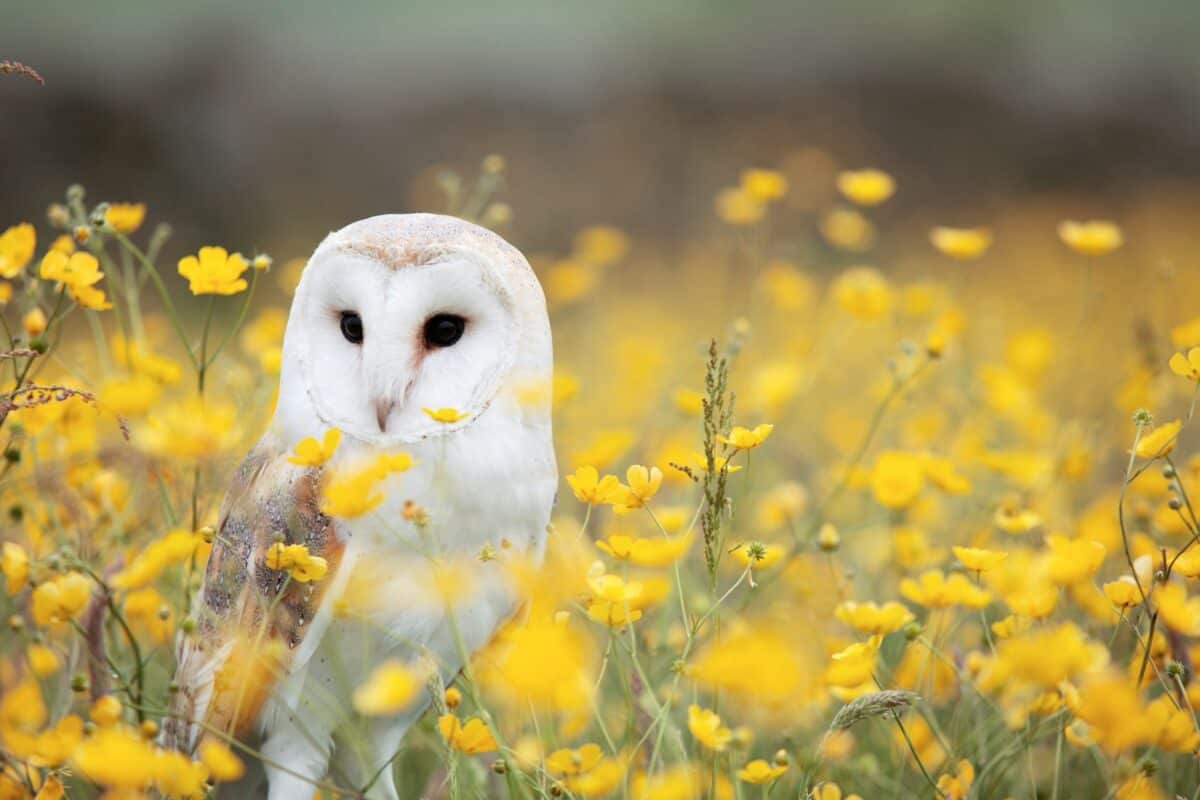
The deadly efficiency of owl hunting is enhanced by their remarkable feet, which feature a unique adaptation called zygodactyly. Unlike most birds that have three toes pointing forward and one backward, owls can rotate one of their outer toes, allowing them to switch between having two toes forward and two backward (like woodpeckers) or three forward and one backward (like most birds). This flexibility gives them extraordinary gripping power from multiple angles.
Additionally, owl feet are equipped with specialized tendons that automatically lock their toes around prey without conscious effort—similar to how human fingers can automatically tighten around an object when our wrist is bent. This means that once an owl grabs its prey, the talons remain firmly clenched until the owl actively releases them, even if the owl is asleep or unconscious. The crushing force of these talons is formidable; a Great Horned Owl’s grip requires 28 pounds of force to open and can exert pressures of up to 500 pounds per square inch—comparable to the bite force of large dogs and enough to instantly kill most of their prey upon impact.
2. Owls Have Tube-Shaped Eyes
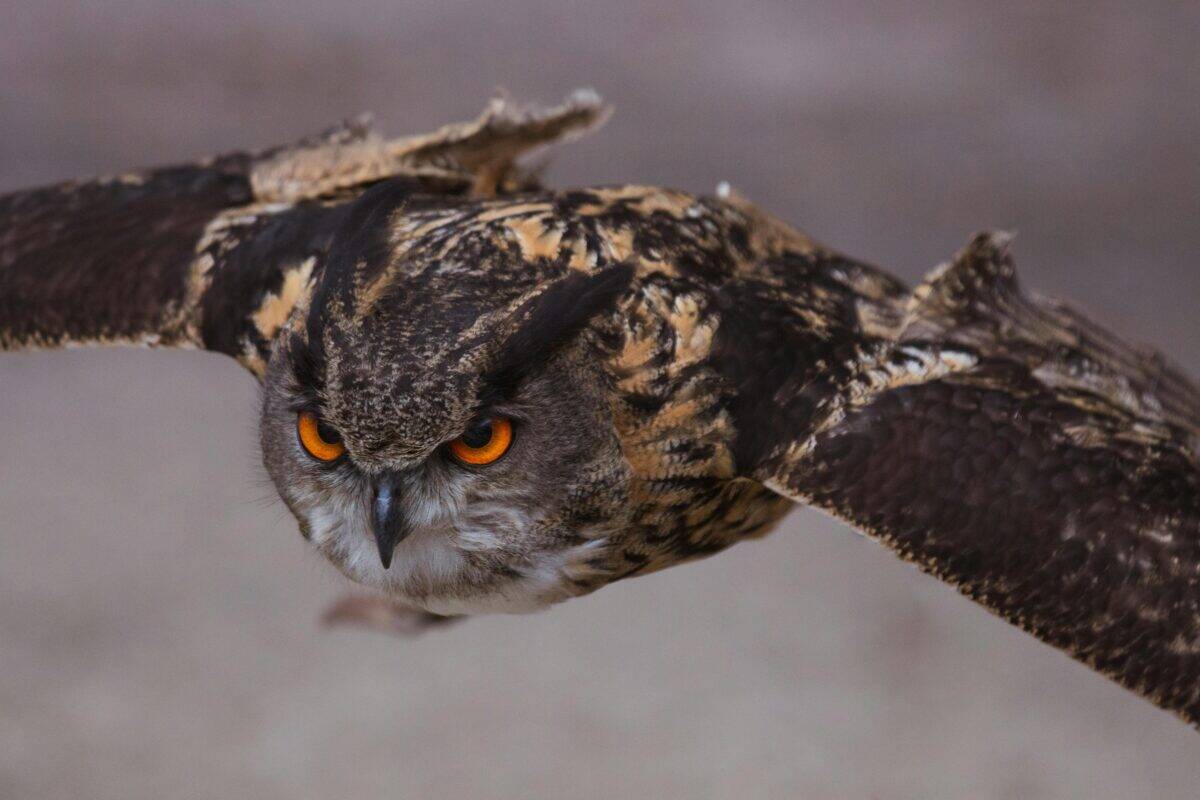
Unlike most animals whose eyes are roughly spherical, owls have elongated, tube-shaped eyes that are fixed in their sockets. These unusual eyes take up so much space in their skull that they aren’t actually eyeballs but rather eye tubes—fixed in place by a bony structure called the sclerotic ring. Because of this immobile eye structure, owls cannot move their eyes to look around as humans do; instead, they must move their entire head to change their visual focus.
This seemingly limiting adaptation actually provides significant advantages. The tubular shape allows for an enlarged retina, creating extraordinary visual acuity, especially in low light conditions. Their eyes contain an extremely high density of rod cells (the photoreceptors responsible for night vision), with some species having up to 1.5 million rods per square millimeter—about five times more than humans. This adaptation, combined with a specialized reflective layer behind the retina called the tapetum lucidum, gives owls vision that is estimated to be 10-100 times more sensitive in low light than human vision, allowing them to detect the slightest movements in near-total darkness.
1. Owls Feature in Harry Potter, But Their Real Magic is Even More Impressive
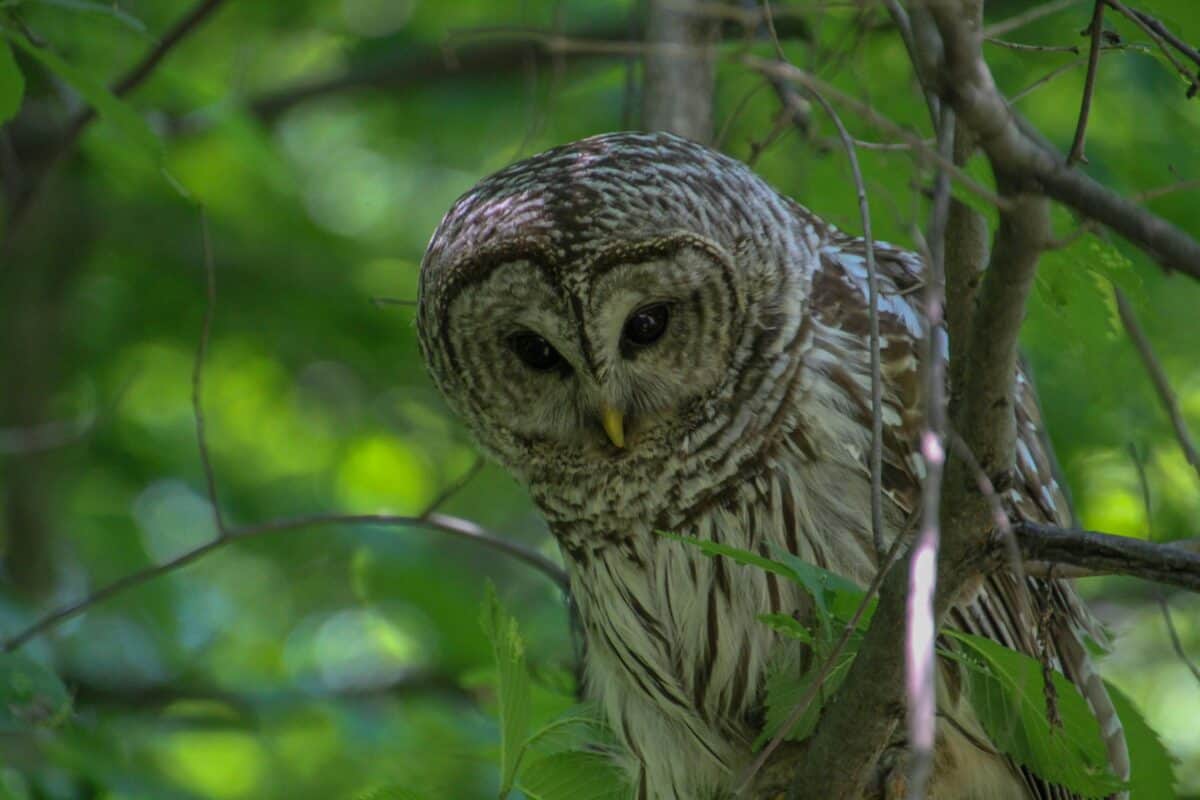
While J.K. Rowling’s Harry Potter series popularized owls as magical messengers carrying wizard mail, the real biological “magic” of owls is far more impressive than fiction. In the natural world, owls perform feats that would seem magical if we didn’t understand the science behind them. Their silent flight, extraordinary vision, rotating heads, and precision hunting in complete darkness would all seem like supernatural abilities to anyone unfamiliar with their specialized adaptations.
The cultural significance of owls extends far beyond modern fiction. In ancient Athens, the owl was the symbol of Athena, goddess of wisdom, while in Native American traditions, different tribes viewed owls as everything from harbingers of death to powerful protectors. Many cultures across history have attributed supernatural qualities to owls because of their nocturnal habits and seemingly mysterious abilities. The reality—that evolution has produced these remarkable adaptations through natural selection over millions of years—is perhaps more impressive than any fictional portrayal could be. The true magic of owls lies in how they reveal the extraordinary capabilities that natural selection can produce.
Conclusion: Nature’s Perfect Nocturnal Predators
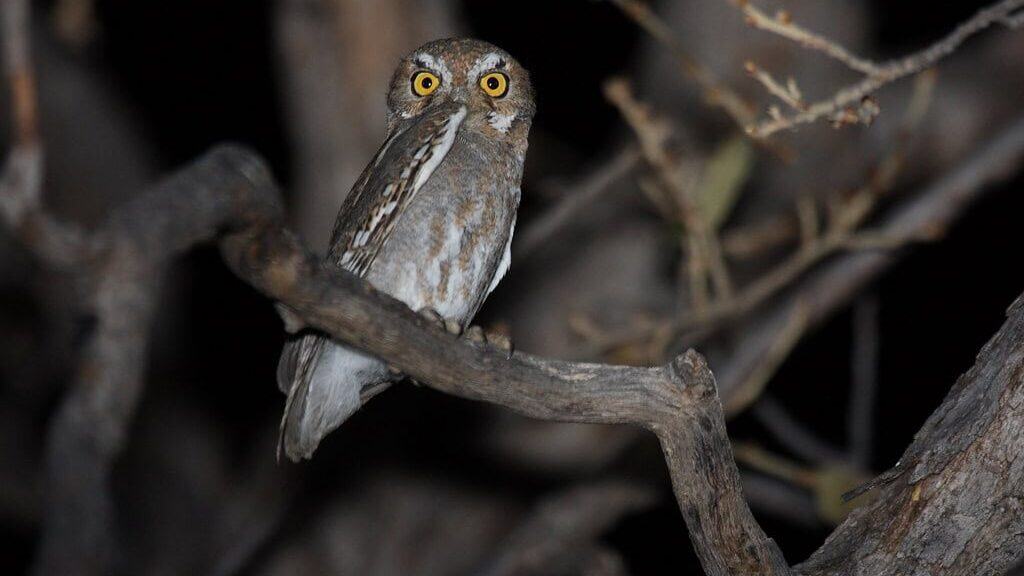
Owls have long captured human imagination with their haunting calls, piercing eyes, and ghostly flight—but as these 15 amazing facts reveal, the truth about these mysterious birds is even stranger than fiction. From their ability to rotate their heads nearly all the way around to their silent wings and asymmetrical ears that help them pinpoint prey in total darkness, owls are built for stealth and survival in ways that defy belief. These real-life superpowers aren’t just fascinating—they reflect millions of years of evolutionary fine-tuning. Whether you’re a seasoned birdwatcher or just learning about these nocturnal predators, one thing is clear: owls are among nature’s most incredible (and underrated) wonders.
- 14 Weirdest Looking Animals on Earth - August 15, 2025
- 13 Creatures That Don Not Need Eyes to See - August 15, 2025
- 13 Wild Species That Can Clone Themselves - August 15, 2025

